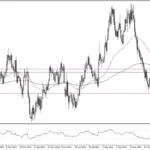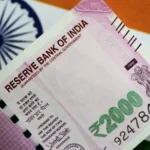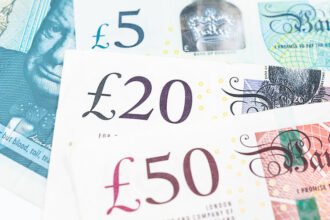- GBP/JPY holds positive ground around 189.20 in Tuesday’s European session.
- The cross remains negative on the 4-hour chart, with the bearish RSI momentum indicator.
- The first upside barrier is located at 189.50; the initial support level is seen at 186.48.
The GBP/JPY cross attracts some buyers to near 189.20 on Tuesday during the early European trading hours. The Pound Sterling (GBP) gains traction after the latest labor market data showed unemployment across the UK has dropped unexpectedly in the three months to June.
The UK Unemployment Rate fell to 4.2% in April-June versus 4.4% prior, the Office for National Statistics (ONS) showed Tuesday. Economists expected the figure to rise to 4.5%. Meanwhile, the Claimant Count Change increased by 135K in July, compared with a revised gain of 32.3K in June, below the estimation of 14.5K by a wide margin.
GBP/JPY keeps the bearish vibe unchanged on the 4-hour chart as it holds below the key 100-period Exponential Moving Average (EMA). However, a further upside cannot be ruled out as the Relative Strength Index (RSI) edges higher above the midline near 61.85.
A decisive break above the upper boundary of the Bollinger Band near 189.50 will see a rise to the 192.00 psychological level. Any follow-through buying above the mentioned level could pave the way to 193.26, a high of August 1.
On the flip side, a low of August 9 at 186.48 acts as an initial support level for the cross. The key contention level emerges in the 185.55-185.60 zone, representing a low of August 8 and the lower limit of the Bollinger Band. The additional downside filter to watch is 182.81, a low of August 6.
GBP/JPY 4-hour chart
Pound Sterling FAQs
The Pound Sterling (GBP) is the oldest currency in the world (886 AD) and the official currency of the United Kingdom. It is the fourth most traded unit for foreign exchange (FX) in the world, accounting for 12% of all transactions, averaging $630 billion a day, according to 2022 data. Its key trading pairs are GBP/USD, aka ‘Cable’, which accounts for 11% of FX, GBP/JPY, or the ‘Dragon’ as it is known by traders (3%), and EUR/GBP (2%). The Pound Sterling is issued by the Bank of England (BoE).
The single most important factor influencing the value of the Pound Sterling is monetary policy decided by the Bank of England. The BoE bases its decisions on whether it has achieved its primary goal of “price stability” – a steady inflation rate of around 2%. Its primary tool for achieving this is the adjustment of interest rates. When inflation is too high, the BoE will try to rein it in by raising interest rates, making it more expensive for people and businesses to access credit. This is generally positive for GBP, as higher interest rates make the UK a more attractive place for global investors to park their money. When inflation falls too low it is a sign economic growth is slowing. In this scenario, the BoE will consider lowering interest rates to cheapen credit so businesses will borrow more to invest in growth-generating projects.
Data releases gauge the health of the economy and can impact the value of the Pound Sterling. Indicators such as GDP, Manufacturing and Services PMIs, and employment can all influence the direction of the GBP. A strong economy is good for Sterling. Not only does it attract more foreign investment but it may encourage the BoE to put up interest rates, which will directly strengthen GBP. Otherwise, if economic data is weak, the Pound Sterling is likely to fall.
Another significant data release for the Pound Sterling is the Trade Balance. This indicator measures the difference between what a country earns from its exports and what it spends on imports over a given period. If a country produces highly sought-after exports, its currency will benefit purely from the extra demand created from foreign buyers seeking to purchase these goods. Therefore, a positive net Trade Balance strengthens a currency and vice versa for a negative balance.






















